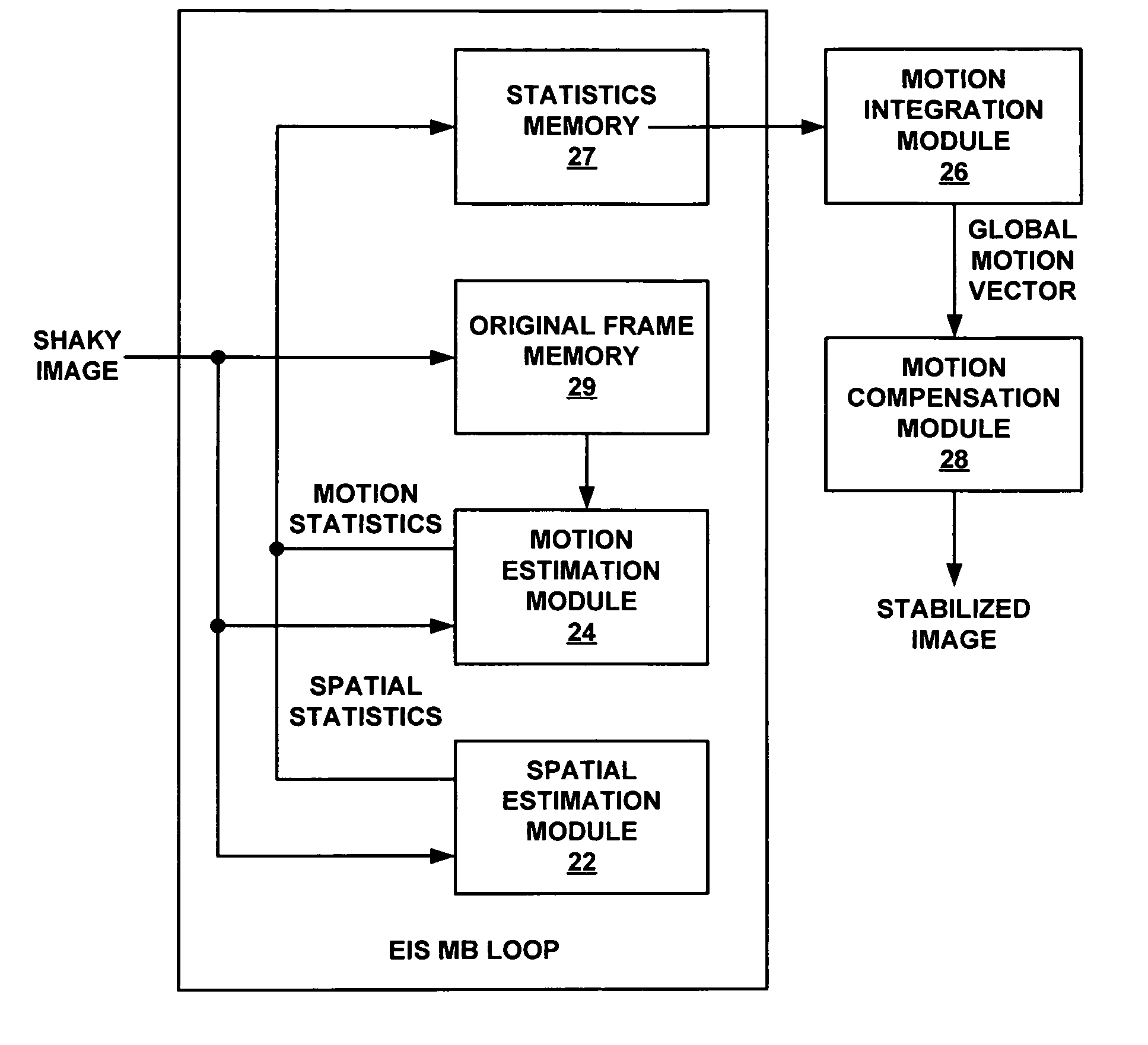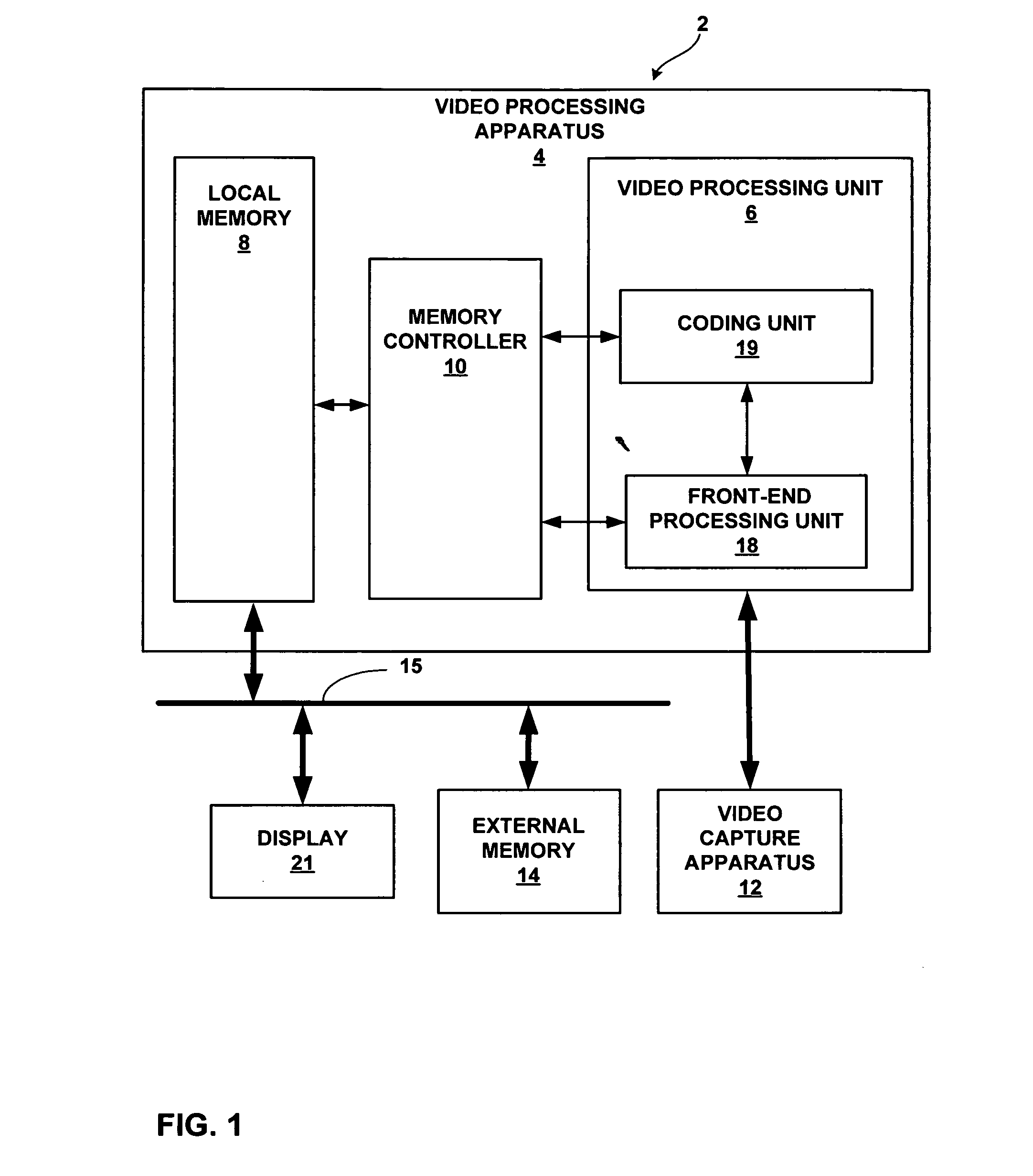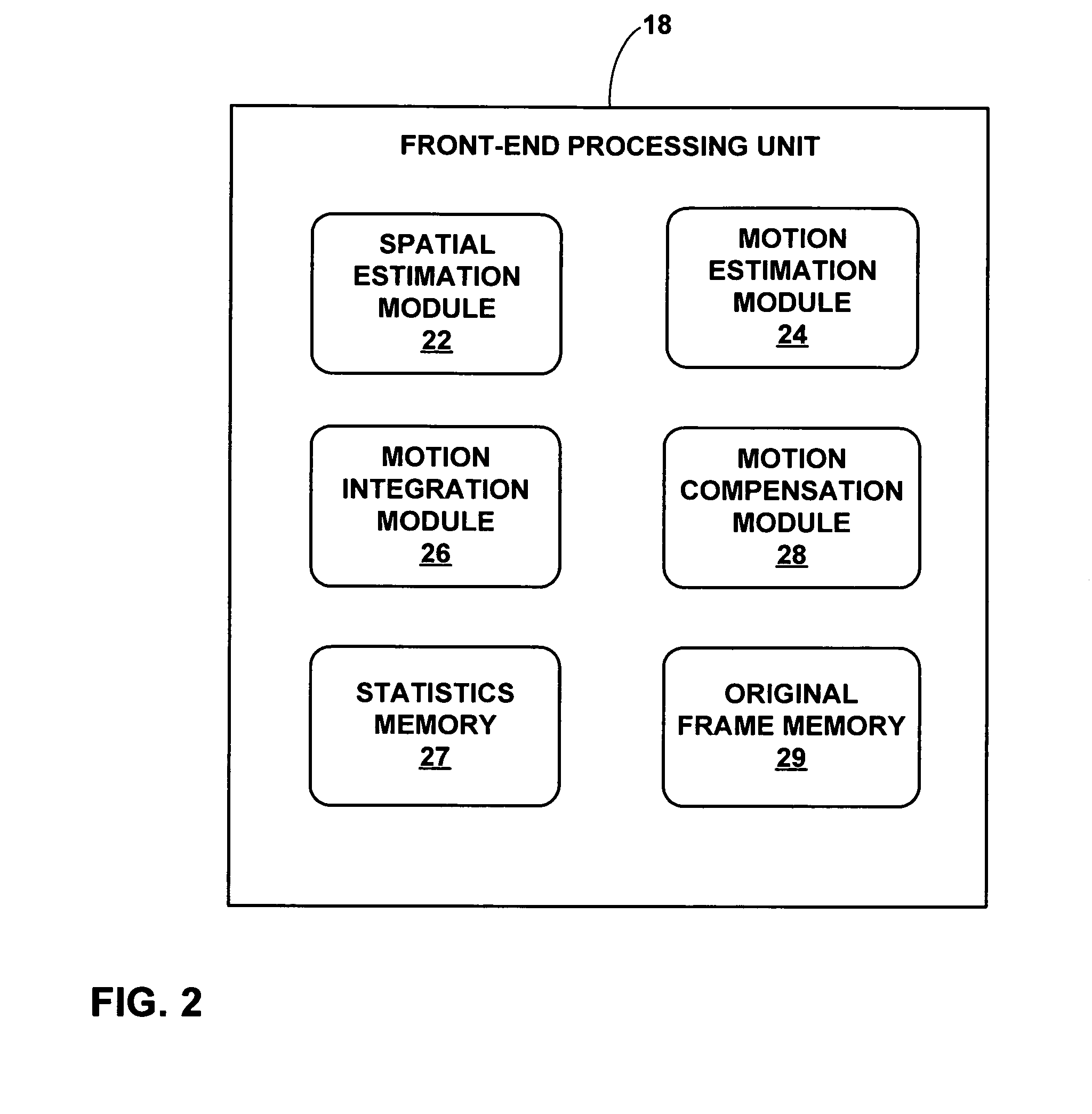Electronic video image stabilization
a technology of electronic image stabilization and video image, which is applied in the field of video processing, can solve the problems of blurry image, shaking or jitter in video image, and image captured by such devices are more susceptible to quality degradation, shaking or jitter,
- Summary
- Abstract
- Description
- Claims
- Application Information
AI Technical Summary
Benefits of technology
Problems solved by technology
Method used
Image
Examples
Embodiment Construction
[0023]FIG. 1 is block diagram of an exemplary device 2 that may implement scalable electronic image stabilization techniques in accordance with this disclosure. Device 2 may form part of a digital video processing device capable of coding video data. The digital video processing device may process video obtained by a video capture device, such as a video camera, or a video archive that stores previously captured video. By way of example, device 2 may form part of a digital video camera, a laptop computer, a desktop computer, a wireless communication device such as a cellular or satellite radio telephone, a personal digital assistant (PDA), or any device with digital video capabilities. Video capture devices may be susceptible to undesirable shaking that undermines video quality. Motion estimation can be used for image stabilization. However, motion may occur due to either unintended shaking of the video capture device or intended movement resulting from panning, zooming, tilting or ...
PUM
 Login to View More
Login to View More Abstract
Description
Claims
Application Information
 Login to View More
Login to View More - R&D
- Intellectual Property
- Life Sciences
- Materials
- Tech Scout
- Unparalleled Data Quality
- Higher Quality Content
- 60% Fewer Hallucinations
Browse by: Latest US Patents, China's latest patents, Technical Efficacy Thesaurus, Application Domain, Technology Topic, Popular Technical Reports.
© 2025 PatSnap. All rights reserved.Legal|Privacy policy|Modern Slavery Act Transparency Statement|Sitemap|About US| Contact US: help@patsnap.com



